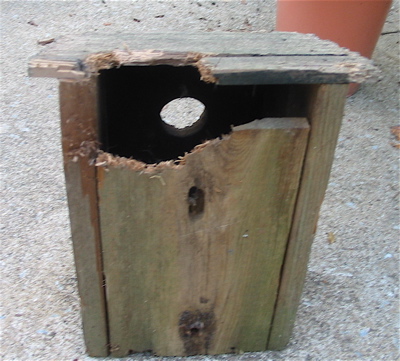Friend and Foe Use Bluebird Houses Through Winter

Now’s a great time to check bluebird houses for repairs and remove nesting materials from the busy spring season. Although bluebirds don’t usually roost in houses… others will! Offering shelter through tough winter months for resident birds is simple if you have a house or two up already. Just clean them out and check for repairs. And a good cleaning is optimal if you have the time, a diluted bleach solution works great. Use a 1:10 ratio of bleach to water and a good scrub brush. Rinse well, let air dry and replace.

For the past few years we’ve had a downy woodpecker who claims a bluebird house for nightly roosting, it’s actually pretty cool! House sparrows on the other hand, should be discouraged from roosting in any houses… they’re a major foe of the bluebird and most native cavity nesting birds.
If and when you do go to clean out houses, you may see droppings which will give you a clue as to who’s roosting in there. If they’re white, you can bet house sparrows are in the area. Black droppings with seeds indicates bluebirds. Let’s hope for the latter 🙂
